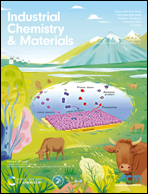Overview of CO2 capture and electrolysis technology in molten salts: operational parameters and their effects
Abstract
Carbon capture and storage (CCS) technology is believed to be a promising solution for global CO2 emission control and climate change. However, the application of CCS projects is facing a dilemma due to their negative cash flow. To address the challenge, it is critical to adopt an innovative technology that can capture and convert CO2 simultaneously with satisfying efficiencies and can make a profit for the end users. Recently, molten salt CO2 electrolysis that splits CO2 into carbon and oxygen has been extensively studied. This study reviews the process mechanisms, the salt selection, and the effects of operating conditions, including temperature and voltage. In most reported articles, the CO2 to carbon conversion efficiency reached at least 80%, and the current efficiency is over 90%, proving the promising potential of the molten salt CO2 electrolysis method. Still, some aspects, such as the impurities' influences and electrode corrosion, have not been thoroughly investigated. Therefore, some suggestions are recommended for future work.
Keywords: CO2 capture; CO2 conversion; Molten salt CO2 electrolysis; CO2 reduction; Carbon nanotubes.

- This article is part of the themed collections: Virtual Collection—Electrocatalysis, Virtual Collections—Carbon Dioxide Capture, Conversion and Utilization and Virtual Collections—ICM Reviews


 Please wait while we load your content...
Please wait while we load your content...